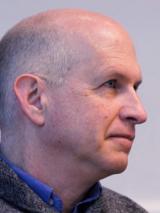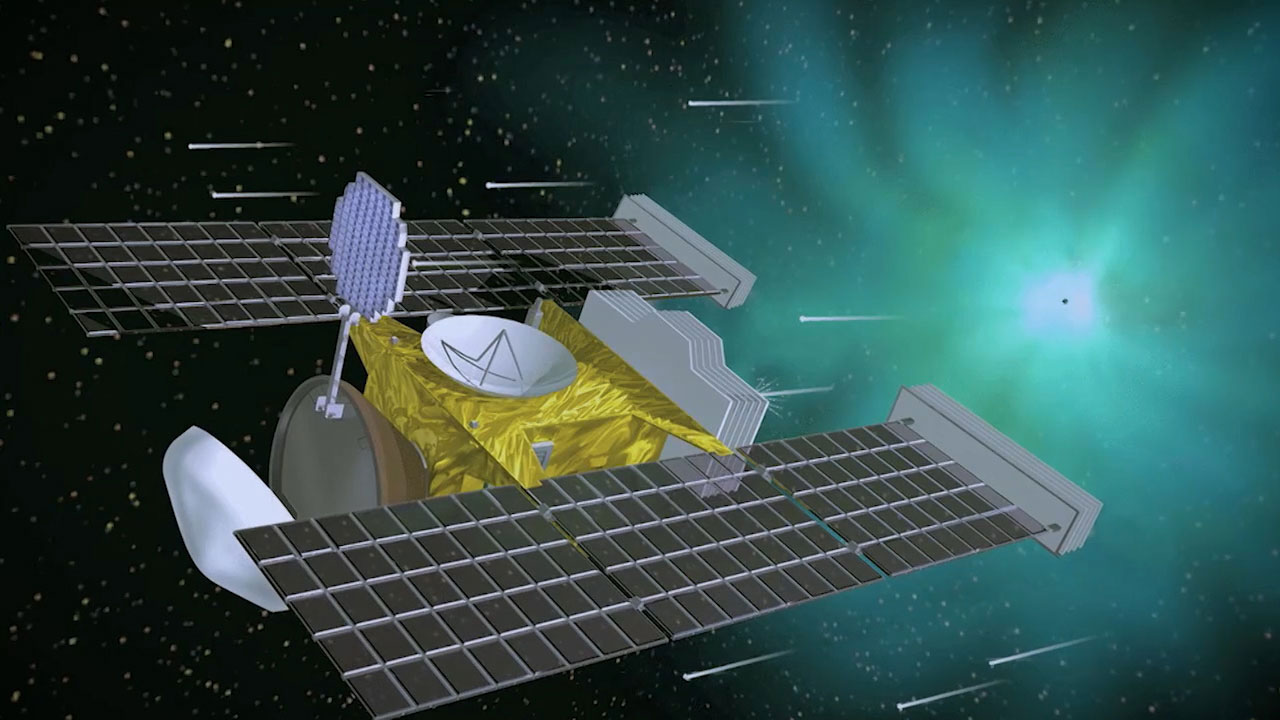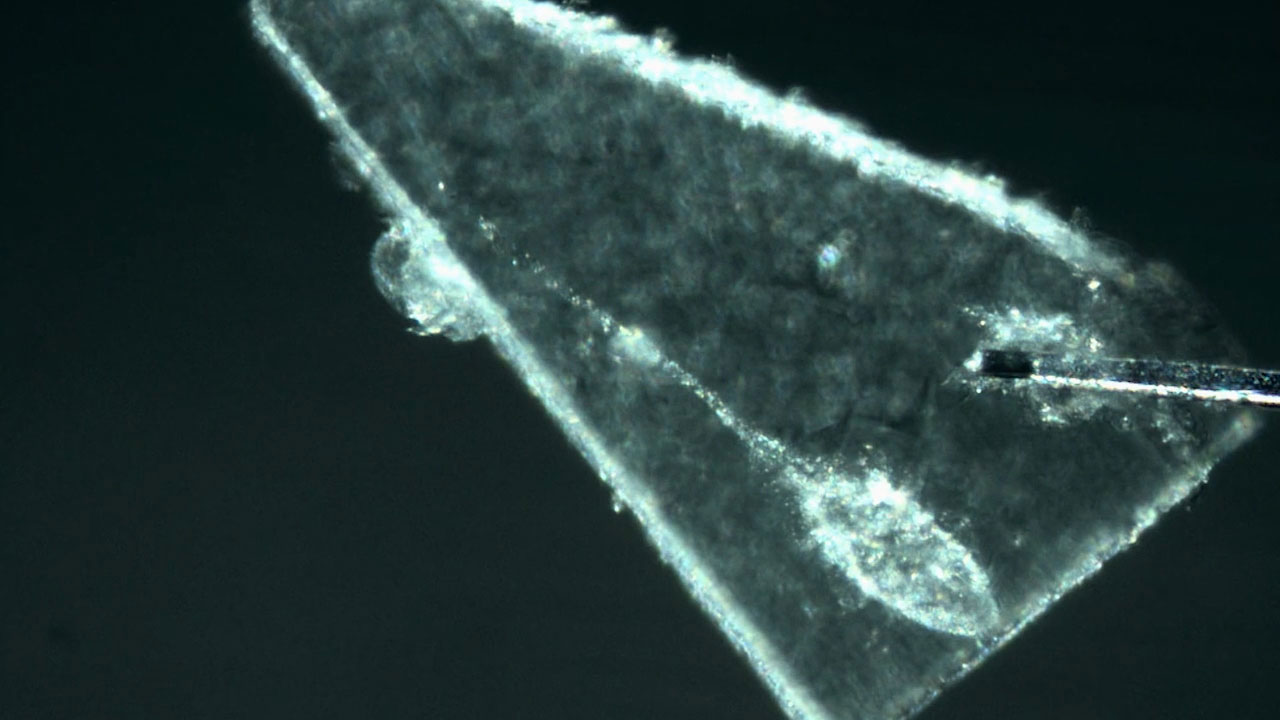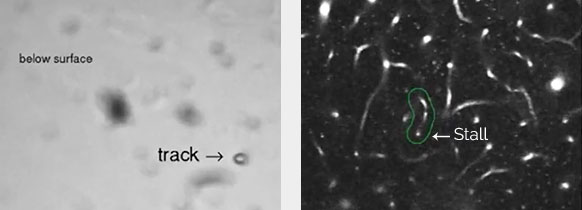
Newsletter
Sign up and stay in-the-know about The Crowd & The Cloud and the world of citizen science.


Andrew Westphal is a senior fellow and research physicist at the Space Sciences Lab in UC Berkeley.
Tell us a little bit about the science of Stardust and how citizen science has helped you move forward doing research.
When the Stardust spacecraft came back to Earth in 2006, it brought back the very first samples of extraterrestrial material ever brought back by a spacecraft from beyond the Moon. They were the first samples, we think, of interstellar dust from outside the solar system.

We were faced with a really hard challenge, which was to actually identify these interstellar dust particles in what’s for us an enormous collector, a tenth of a square meter. We had no idea how to find them. We used a robotic microscope, to collect images of the aerogel collectors in this tray of materials. In a microscope, that's about a million fields of view that we would have to search to identify these tiny particles.
Purely out of desperation, because we really didn't know how else to do it, we decided to recruit the help of amateurs who could help us to search these images that we collected with an automated microscope. Now, more than 33,000 volunteers, have collectively searched more than a hundred million fields of view. We have identified now more than 200 tracks, some of which we think are interstellar in origin. This is a critical part of the Stardust@Home project: to identify tiny particles from outside the solar system for the first time.
When you first came up with this idea of using citizen scientists to help rocket scientists, were people skeptical that you would get quality results?
When we first started the project, people in our field of cosmochemistry were very skeptical about this approach. I completely understand why they would be skeptical. After all, what we were asking them to do was to believe that complete strangers could be trusted to identify these tracks in these aerogel collectors. However, we realized that the human brain is a really powerful instrument.

Stardust tracks in aerogel.
Using calibration images, we can measure how efficient people are, how easily and well people can identify tracks in the aerogel. What we found was what we suspected would be true, which is that people are extremely good at identifying these tracks, and the proof is in the pudding. Now we have more than 200 tracks that are unambiguous, they're tracks that are caused by particles that are stopped in the aerogel, and that would have taken us decades to find on our own. By recruiting the help of thousands of people, we've been able to find these tracks very quickly. Out of more than 200 tracks that we've found so far, only two of them were found by professional scientists in our lab. All the rest of them were found by amateurs going through the Stardust@Home project.
By presenting our results over several years at conferences, we convinced the skeptics that our professional colleagues realized that this really was a good approach to finding interstellar dust particles in the aerogel.
How long would it have taken professional scientists to get the results that you got from embodying citizen scientists?
It would take our research group more than a hundred years to identify these tracks with our very limited resources.
What do the citizen scientists seem to get out of participating in Stardust@Home? What are the motivations for participating?
What we've found is that the Stardust@Home volunteers are motivated by lots of different things. Some volunteers are motivated by participating in a real science project. In fact, we made a deal with our volunteers when we first started, which we have held to. Anyone who is a discoverer of a particle that is described in a publication, whether it turns out to be interstellar or not, is named as a coauthor on that publication and they have the privilege of naming that particle. (CROWD & CLOUD: compare that approach to recognizing contributors with the story of William Whewell’s “Great Tide Experiment” of 1835, in which his 650 volunteer observers were referred to, rather dismissively, as “subordinate laborers.”)
Another motivation that people have is to compete with some of their friends who are trying to get a high score in the project. That can be very motivating for some!

Images from Stardust@Home (left) and EyesOnALZ (right).
The EyesOnALZ project seems to be very different from Stardust@Home; interstellar particles versus operations of the brain. What was your reaction when somebody said, "Can you help us work towards solutions for Alzheimer's?"
When we were first approached about the idea of applying the Stardust@Home technique to Alzheimer's research, we were frankly a bit skeptical. As I learned more about the project, I realized that this is actually the perfect platform because the imagery that comes from the fluorescence microscope looking at mouse brains turns out to be perfect for the Stardust@Home infrastructure. We're very excited about this idea of using the Stardust@Home platform for doing Alzheimer's research.
There's also a personal connection. My father died of Alzheimer's about 12 years ago. He participated in one of the very first citizen scientist projects in 1957, a project called "Operation Moon Watch," which was organized by the Smithsonian. It organized amateur radio operators to monitor the very first satellites. I think my Dad would be very, very pleased with the way that this is turning out.
Why are humans better for EyesOnALZ than machines? You read about progress in machine cognition, artificial intelligence, image recognition. What is it that the human brain can add in this case?
The human brain is an amazing image processor, is incredibly sophisticated. When we first started the Stardust@Home project, we thought about using computer algorithms to recognize the tracks of particles in aerogel. We realized that it probably would be possible to write an algorithm that would recognize certain kinds of tracks, although even that task would have been very difficult just because of the nature of the aerogel that was used to capture the particles. This aerogel has inclusions in it, and cracks and scratches. It's very complicated.
The wonderful thing about the human brain is that it's not very literal. It can recognize things that maybe a computer algorithm, which can only think very narrowly, might have missed. In fact, that's the way it turned out. They didn't turn out to be the kinds of tracks that we would have trained our algorithms on 12 years ago or 10 years ago. It turned out to be critically important, in fact, to have human brains looking for these tracks.
Our experience with Stardust@Home is that people can learn how to find incredibly subtle features and objects in a very complicated field. The Alzheimer's research is going to be very different. It really is going to be challenging, I think, because the kinds of imagery that people will look at have subtle features. I'm only now just learning about how to recognize the flowing or blockage stalls in a capillary. I am extremely optimistic that the Stardust@Home approach will work for Alzheimer's research because I think that the human brain is such an amazing image processor and will readily pick up and understand and learn how to identify flow in these capillaries.
How much public interest and support for this do you think there is going to be?
I will be shocked if there's not a tremendously larger interest in this project for Alzheimer's research, because Alzheimer's is something that affects essentially everybody either personally or through their close family members. I am very optimistic that this approach will have a tremendous response. I'm very excited about this project. I think that it has a tremendous potential for addressing the Alzheimer's problem. I have a particular resonance with it because of the death of my own father 12 years ago due to Alzheimer's. I'm really excited about the possibility that this could make a big difference in finding a cure for Alzheimer's.
